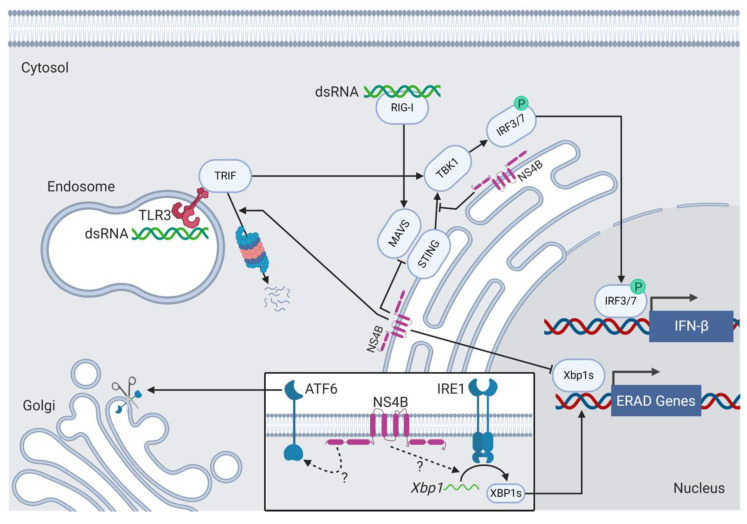Figure 6.
NS4B inhibits innate immune signal transduction and interacts with unfolded protein response sensor proteins. Cytoplasmic RIG-I and endosomal TLR3 sense HCV dsRNA and signal through MAVS and TRIF, respectively, leading to the TBK1-dependent phosphorylation and the activation of IRFs that drive IFN-β expression in the nucleus. The viral bZIP and transmembrane protein NS4B prevent the association of MAVS with STING and lead to the enhanced proteasomal degradation of TRIF to inhibit IFN-β production. NS4B also induces ATF6 cleavage and Xbp1 splicing by unknown mechanisms and therefore induces the UPR. NS4B inhibits the XBP1s-dependent expression of ER-associated degradation genes.

